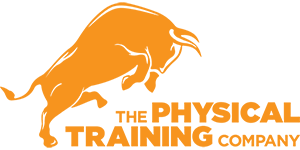Top Stretches for Lower Back
Are you feeling a bit stiff or achey after a training session? 🏋️
Our resident injury rehabilitation personal trainer in Dubai Keith O'Malley-Farrell shares his top stretches for some of the most common areas we feel are tight after those gym sessions!
Relieving the lower back can be done through stretching our glutes and releasing our hip flexors, thus releasing any pressure you might feel.
Our shoulders are also subject to stiffness, grabbing a trigger point ball or a lacrosse ball may be the little magic tool you need in giving your shoulders and the surrounding muscles the relief they need, allowing you to lift pain free!
The lower back, or the lumbar region, is a complex structure of interconnected and overlapping elements that support the upper body's weight, provide mobility for motion, and protect the spinal cord and nerve roots.
In the context of sports science, understanding the anatomy and functionality of the lower back is crucial, especially when it comes to activities like weight lifting, which place significant stress on this region.
Warm-ups and stretches play a vital role in preparing the lower back for physical activity and mitigating injury risks.
Anatomy of the Lower Back
The lower back consists of five lumbar vertebrae (L1-L5), which are the largest and bear the most body weight.
Between these vertebrae are intervertebral discs acting as shock absorbers, preventing the vertebrae from rubbing against each other.
Ligaments hold the vertebrae in place, and tendons attach muscles to the spinal column. The major muscles supporting the lower back include:
- Erector Spinae: A group of muscles that run along the spine. They are responsible for extending the back and maintaining posture.
- Quadratus Lumborum: Located on either side of the lumbar spine, these muscles are vital for bending the torso to the side and stabilizing the lower back.
- Multifidus: These muscles span the entire length of the spine and work to stabilize the vertebrae during movement.
Impact of Weight Lifting on the Lower Back
Weight lifting, especially exercises that involve heavy lifting or improper form, can place excessive strain on the lower back.
The lumbar spine is particularly vulnerable to injury from activities that involve bending and twisting motions combined with weight resistance.
This can lead to conditions such as lumbar strains, herniated discs, or chronic lower back pain. Proper technique and body mechanics are critical to minimize the risk of injury.
Engaging the core muscles during lifts can also provide additional support to the lower back, distributing the weight more evenly and reducing strain on any single part of the back.
The Importance of Warm-Ups and Stretches
Warm-ups and stretches are essential components of a comprehensive fitness regimen, especially for activities impacting the lower back significantly.
They prepare the body for physical exertion and enhance flexibility, which can help prevent injuries.
- Warm-Up Exercises: A good warm-up increases blood flow to the muscles, making them more elastic and less prone to tears. Dynamic warm-ups that mimic the movements of the upcoming activity can be particularly beneficial. For example, light jogging or cycling before lifting weights can help prepare the lower back and associated muscles for the stress to come.
- Stretching: Incorporating stretching exercises targeting the lower back, hamstrings, and hip flexors can improve overall flexibility and range of motion. Stretches like the child’s pose, piriformis stretch, and cat-cow stretch are effective in loosening the muscles around the lumbar spine. Stretching should be performed both before and after weight lifting to ensure the muscles are properly warmed up and then relaxed after the activity to prevent stiffness.
Preventive Measures and Rehabilitation
In addition to warm-ups and stretches, incorporating core strengthening exercises into a fitness routine can fortify the lower back and reduce the likelihood of injury. Exercises such as planks, bridges, and abdominal crunches strengthen the core muscles, which support the spine.
For individuals recovering from lower back injuries, a physical therapist can design a therapeutic exercise program tailored to their specific needs. This program may include a combination of stretching, strengthening, and low-impact aerobic conditioning to facilitate the healing process and restore function to the lower back.
Conclusion
The lower back’s complexity and its role in everyday movements make it susceptible to injury, particularly from activities like weight lifting. Back pain can cause serious detriment to our quality of life.
Understanding the anatomy and function of the lower back, along with the implementation of proper warm-ups, stretches, and core strengthening exercises, can significantly mitigate injury risks. Adopting these practices not only enhances performance but also ensures the longevity and health of the lower back, enabling individuals to continue enjoying physical activities pain-free.

